As a savvy internet user you might think no one clicks on Facebook ads.
Wrong.
Facebook is on track to make over $4 billion in revenue this year from advertising. Someone’s clicking.
How do you get them to click your ads? More importantly, how do you get them to buy your product?
Many marketers who have tried Facebook ads, especially in their early days, decided that Facebook advertising doesn’t work. Don’t believe them.
If you’re totally new to Facebook, start with this Facebook Marketing Guide. Then come back to this post for a deep dive into advertising.
In this guide, you’ll learn which businesses are the best fit for Facebook ads and how to run successful campaigns. We’ll cover the most common mistake marketers make and the biggest factor in your ad’s success.
You can learn more and create your first ad at Facebook.com/advertising.
How Do Facebook Ads Work?
Facebook ads now come in several varieties. You can promote your Page, posts on your Page, actions users took, or your website itself. Despite Facebook’s increasing focus on native ads and keeping traffic on its site, you can still be successful sending users to your website.
Facebook ads are targeted to users based on their location, demographic, and profile information. Many of these options are only available on Facebook. After creating an ad, you set a budget and bid for each click or thousand impressions that your ad will receive.
Facebook’s most important ad targeting options
Users then see your ads in the sidebar on Facebook.com.
This guide will walk you through the best practices for creating CPC ads that drive traffic to your website. Facebook’s other ad options are great for driving engagement and brand awareness, but ads driving users off site are still the best option for direct response advertisers looking to make a sale.
Who Should Advertise on Facebook?
Many businesses fail at Facebook advertising because they are not a good fit. You should always test new marketing channels, especially before demand drives up prices, but make sure to consider your business model’s fit to the network.
Facebook ads are more like display ads than search ads. They should be used to generate demand, not fulfill it. Users are on Facebook to connect with their friends, not to find products to buy.
Low-Friction Conversions
The businesses that succeed with Facebook ads ask users to sign up, not to buy. You must use a low-friction conversion to be successful.
A visitor to your website wasn’t looking for your product. He clicked your ad on a whim. If you’re relying on him to immediately buy something to make your ad ROI positive, you will fail.
Facebook users are fickle and likely to click back to Facebook if you ask for a big commitment (purchase) up front. Instead, stick to simple conversions like signing up for your service, filling out a short lead form, or submitting an email address.
Even if you sell products, not services, you should consider focusing on an intermediate conversion like a newsletter signup. Then you can upsell later through email marketing.
Living Social’s landing page with email sign up
Daily deal sites like Groupon, AppSumo, and Fab are good examples of businesses that can succeed with Facebook advertising. After you click one of their ads, they just ask for your email address. They’ll sell you on a deal later.
Business Model
Even if you only ask for an email address initially, you’ll need to eventually make money from these users if your ads are to be profitable.
The best business model that fits for Facebook ads earn revenue from their users over time, not all at once. A user may have given you her email, but you’ll need to build more trust before she buys anything.
You shouldn’t depend on one big purchase from her. Several smaller purchases are ideal.
Daily deal and subscription sites are great examples of business models that can thrive on Facebook. Both have customers whose lifetime value is spread out over six months or more.
At Udemy, we focus on getting users to sign up on their first visit. By aiming to be profitable on ad spend in six months (not one day), we can turn Facebook users into long-term customers. We target a 20% payback on ad spend on day one and 100% payback in six months. These numbers can serve as a rough guide for your business.
How to Target Facebook Ads
The #1 mistake most marketers make with Facebook ads is not targeting them correctly.
Facebook’s ad targeting options are unparalleled. On Facebook, you can target users by:
- Location
- Age
- Gender
- Interests
- Connections
- Relationship Status
- Languages
- Education
- Workplaces
Each option can be useful, depending on your audience. Most marketers should focus on location, age, gender, and interests.
Location allows you to targets users in the country, state, city, or zip code that you service.
Age and gender targeting should be based on your existing customers. If women 25-44 are the bulk of your customers, start out only targeting them. If they prove to be profitable, you can then expand your targeting.
Interest targeting is the most powerful but misused feature of Facebook ads. When creating an ad, you have two options: broad categories or precise interests.
Broad Category Targeting
Broad categories include topics like Gardening, Horror Movies, and Consumer Electronics. Recently, Facebook has added newer targets like Engaged (1 year), Expecting Parents, Away from Hometown, and Has Birthday in 1 Week.
Broad interests may seem like an efficient way to reach a large audience. However, these users often cost more and spend less. Avoid using Broad Category targeting.
Precise Interest Targeting
Precise Interest Targeting allows you to target users based on information in their profile including “listed likes and interests, the Pages they like, apps they use, and other profile (timeline) content they’ve provided” (Facebook). You’ll find the best ROI using Precise Interest targeting.
Facebook has an amazing array of interests to target from Harry Potter to underwater rugby. The hard part is choosing the right ones.
When targeting precise interests, Facebook provides the size of the audience and other suggested likes and interests. You won’t have any competitive data. Once you select interests for an ad, Facebook will show an aggregate suggested bid.
Many marketers target the largest groups possible. This is a mistake. These groups are more expensive and less targeted.
Rather than target broad terms for your niche like “yoga” or “digital photography,” focus on specific interests. Research which magazines and blogs your customers read, who they follow on Twitter, and which related products they buy. If you use laser-focused interests like these, you’ll reach the people who are most interested in your topic and the most willing to spend money on it.
For example, when we added a new DJ course on Udemy, we didn’t just target the interest “disc jockey.”
Instead, created ads targeting DJ publications like DJ Magazine and Mixmag. Then created another ad targeting DJ brands like Traktor and Vestax. Combine smaller, related interests into a group with an audience of 50,000 to 1M+. This structure will create ads with large audiences that are likely to convert.
Example interest group of DJ-focused brands
Advanced tip: Use Facebook Connect as a sign up option on your site. When users connect via Facebook, you’ll be able to analyze their interests. Index these interests against the number of fans of their respective Facebook Pages. You’ll be left with your high-affinity interests. Using this method, we created a target group that has been our best performer (out of hundreds of test groups) for nearly a year.
Images for Facebook Ads
The most important part of your ad is the image. You can write the most brilliant copy in the world, but if your image doesn’t catch a user’s eye, you won’t get any clicks.
Don’t use low-quality images, generic stock photography, or any images that you don’t have the rights to use. Don’t steal anything from Google Images. Unless you’re a famous brand, don’t use your logo.
Now that we have the no’s out of the way, how should advertisers find images to use? Buy them, create them yourself, or use ones with a Creative Commons license.
Below you’ll learn which types of images work best and where specifically to find them.
People
Images of people work best. Preferably their faces. Use close-ups of attractive faces that resemble your target audience.
Younger isn’t always better. If you’re targeting retirees, test pictures of people over 60. Using a pretty 25 year old girl wouldn’t make sense.
Facebook ad images are small (100 x 72 pixels). Make sure to focus on a person’s face and crop it if necessary. Don’t use a blurry or dark picture.
Advanced tip: Use images of people facing to the right. Users will follow the subject’s line of sight and be more likely to read your ad text.
Aside from models, you can also feature the people behind your business and showcase some of your customers (with their permission, of course).
Typography
Clear, readable type can also attract clicks. Bright colors will help your ad stand out.
Just like with text copy, use a question or express a benefit to the user. Treat the text in the image as an extension of your copy.
Funny
Crazy or funny pictures definitely attract clicks. See I Can Has Cheeseburger, 9GAG, or any popular meme.
Unfortunately, even with descriptive ad text, these ads don’t always convert well. If you use this type of ad, set a low budget and track the performance closely. You’ll often attract lots of curiosity clicks that won’t convert.
How to Create Images
You have three options to find images: buy them, find ones that are already licensed, or create them yourself.
You can buy stock photography at many sites including iStockPhoto or Big Stock. Don’t use stock photos that looks like stock photos. No generic businessmen or stark white backgrounds, please.
Users recognize stock photos and will ignore them. Instead, find unique photos and give them personality by cropping or editing them and applying filters. You can use Pixlr, an online image editor, for both.
If you don’t have the money to buy photos, you can search for Creative Commons licensed images.
The third option is to create the images yourself. If you’re a graphic designer, this is easy. If you aren’t, you can still create typographic images or use basic image editing to create something original from existing pictures.
Rotating Ads
Each campaign should have at least three ads with the same interest targets. Using a small number of ads will allow you to gather data on each one. For a given campaign, only 1-2 ads will get a lot of impressions, so don’t bother running too many at once.
After a few days, delete the ads with the lowest click-through rates (CTRs) and keep iterating on the winners to continually increase your CTR. Aim for 0.1% as a benchmark. You’ll likely start out closer to the average of 0.04%.
Writing Facebook Ad Copy
After seeing your image, users will (hopefully) read your ad text. Here you can sell them on your product or service and earn their click.
Despite the 25 character headline and 90 character body text limits, we can still use the famous copywriting formula AIDA.
(A)ttention: Draw users into the ad with an attention-grabbing headline.
(I)nterest: Get the user interested in your product by briefly describing the most important benefit of using it.
(D)esire: Create immediate desire for your product with a discount, free trial, or limited time offer.
(A)ction: End the ad with a call to action.
AIDA is a lot to fit into 115 characters. Write 5-10 ads until you’re able to fit a succinct sales pitch into the ad.
Here’s an example for an online programming course:
Become a Web Developer
Learn everything you need to become a web developer from scratch.
Save 65%. Enroll now!
Bidding on Facebook Ads
Like on any ad network, strategic bidding can mean the difference between profit and a failed test.
After you create your ad, Facebook will provide a suggested bid range. When you’re just starting out, set your bid near the low end of this range.
Your CTR will quickly start to dictate the price you’ll need to pay for traffic. If your CTR is high, your suggested bids will decrease. If your CTR is low, you’ll need to bid more for each click. Optimize your ads and targets to continually increase your CTR.
In addition to click volume, your bid will also dictate how much of your target audience you’re able to reach. Facebook provides a great chart for every campaign showing the size of your target audience and how much of that audience you’ve reached.
Facebook chart showing how much of your target audience your campaign has reached
Increasing your bid will help your ad reach more of your target audience. If your ad is performing well but you’re reaching less than 75% of your target audience, you can increase your bid to get more clicks.
If your audience penetration is high, increasing your budget will increase your ad’s frequency: how many times a targeted user will see it.
Landing Pages
Getting a click is only the beginning. You still need the visitor to convert.
Make sure to send him to a targeted, high-converting landing page. You know his age, gender, and interests, so show him a page that will solve his problems.
The landing page should also contain the registration form or email submit box that you’ll track as a conversion. Focus the landing page on this action, not the later sale. If you want visitors to sign up for your newsletter, show them the benefits or offer a free gift for their email.
How to Track Performance
Facebook no longer offers conversion tracking. Facebook Insights are great for data within Facebook but can’t provide information on users who have left the site.
To properly track the performance of your Facebook campaigns, you’ll need to use an analytics program like Google Analytics, or your own back end system. Tag your links using Google’s URL builder or your own tracking tags.
Conversion Tracking
As mentioned above, make sure to separate campaigns by interest groups so that you can see how each one performs.
You can track them using the utm_campaign parameter. Use the utm_content parameter to differentiate between ads. Ad-level tracking is useful when testing eye-catching images and before you’ve established a baseline CTR and conversion rate.
Performance Tracking
You will also need to monitor your performance within the Facebook interface. The most important metric to track is click-through rate. Your CTR affects both the number of clicks you’ll receive and the amount you will pay per click.
Ads with a low CTR will stop serving or become more expensive. Ads with a high CTR will generate as many clicks as will fit within your budget. They will also cost less. Keep a close eye on CTR by interests and ads to learn which audiences work best and which ads resonate with them.
Even the best ad’s performance will decline over time. The smaller your target audience is, the faster this will happen. Usually you’ll see your traffic start to drop off in 3-10 days.
When it does, refresh the ads with new images and copy. Duplicate your existing ads then change the image and ad text. Do not edit the existing ad. Delete any existing ads not getting clicks. By the next day, you’ll see the new ads accruing impressions and clicks.
Monitor the images’ performance over time to see which ones generate the best CTR and maintain their traffic the longest. You can rotate high-performing images back in every few weeks until they stop getting clicked at all.
Conclusion
Despite the learning curve, Facebook advertising can be a great marketing channel for the right business. The most important points to remember are target specific interests, use eye catching images, give users a low-friction conversion, and track everything.
After a week or two of learning what works for your business, you’ll be able to generate a steady source of conversions from the world’s largest social network.
What are your best Facebook advertising tips? Share them in the comments.
About the Author: Fred Perrotta is a Marketing Manager at Udemy, where experts teach the world. You can learn more about Facebook advertising at Udemy.com.
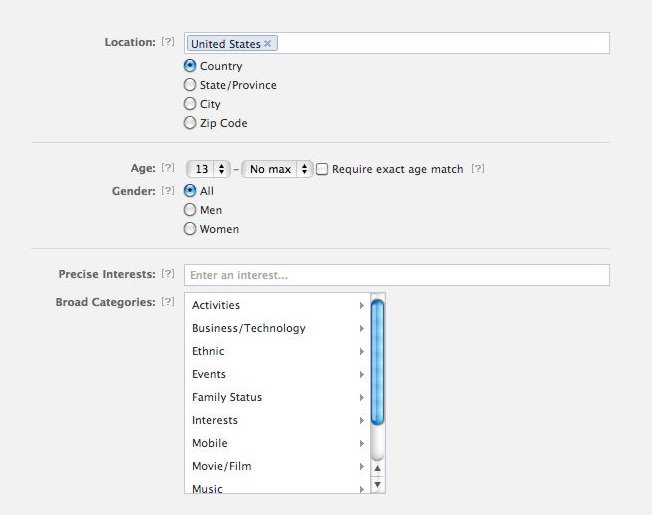
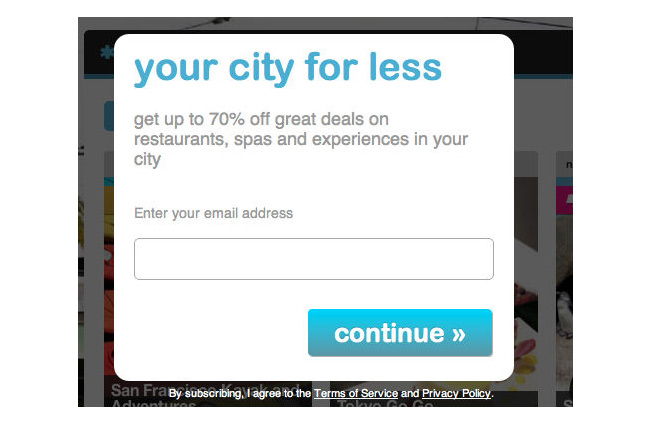
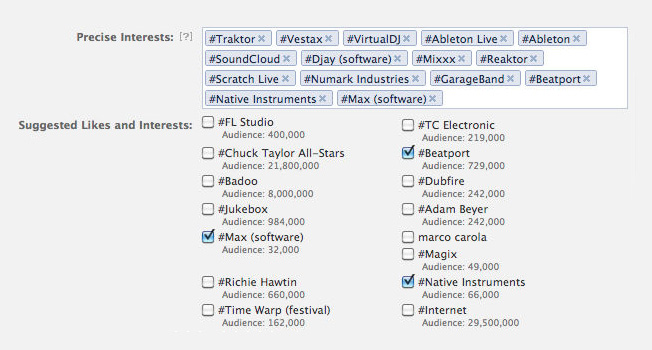
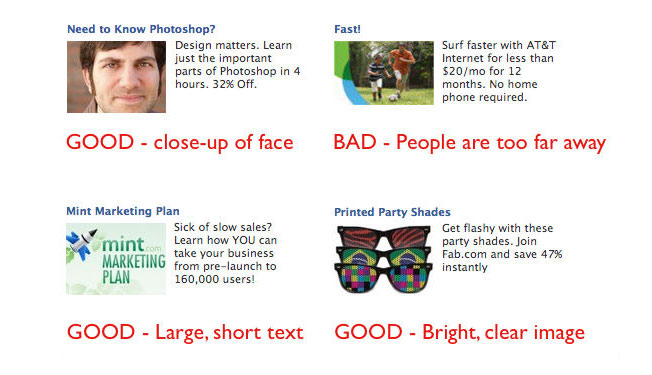
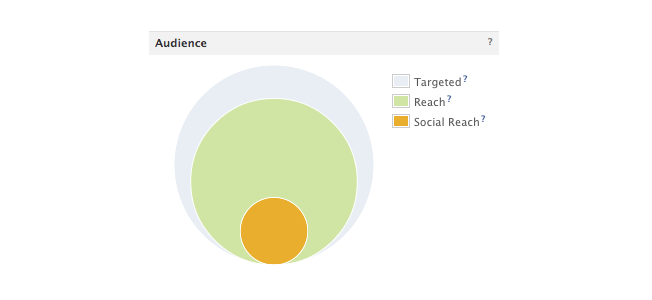
Comments (48)